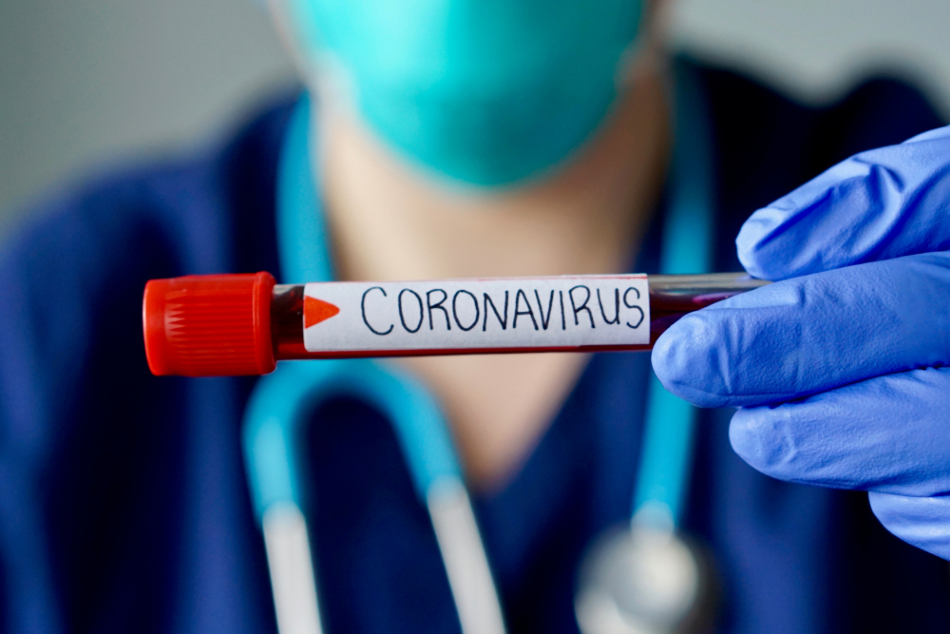
Image Credit: SamaraHeisz5/Shutterstock.com
COVID-19 has created an extraordinary global pandemic. As of 18 June 2020, the death rate stands at 444,813 people worldwide, mostly in Europe and the Americas. The disease is most deadly for those with existing conditions such as cardiovascular disorders, massive alveolar damage, or progressive respiratory disease.
Without a vaccine, a means of controlling the spread of the disease quickly, reliably and cost-effectively is necessary. Healthcare providers are looking for ways to rapidly identify those at the highest risk, allowing them to take early action and save lives.
A scientist from Michigan State University (MSU) believes he has uncovered two sensitive, easy-to-use nano-based optical systems that can accurately identify COVID-19 patients at high risk of death.
How the Tests Work
Nanotechnology represents an excellent prospect for developing affordable and scalable detection methods. Nanoparticles are already well-known for their antibacterial properties, and nanosensors show high proficiency in detecting bacteria and viruses at very low concentrations.
In a paper published in Molecular Pharmaceutics, Morteza Mahmoudi, assistant professor in the Department of Radiology, Precision Health Program at the College of Human Medicine, proposes a point-of-care diagnostic platform that utilizes nanoparticles or magnetic levitation (maglev) to identify and evaluate future risk.
"Such technology would not only be useful in protecting healthcare centers from becoming overwhelmed, but could also prevent severe shortages of healthcare resources, minimize death rates and improve management of future epidemics and pandemics."
Morteza Mahmoudi, assistant professor in the Department of Radiology, Precision Health Program at the College of Human Medicine
The composition of biological fluids, such as tears, saliva, urine and plasma, varies depending on the level of infection and stages of the disease.
Different infections and diseases create different patterns specific to the viral load and disease stage, much like a fingerprint. Technology capable of utilizing this information to identify and index patterns could be crucial to a breakthrough in diagnostic technology.
Biomolecular Corona
The first method – the protein corona sensor array platform – introduces a patient’s biological fluid to a small number of nanoparticles measuring less than a thousandth of the diameter of a human hair.
The novel particle surface aggregates proteins, lipids and other molecules from the fluid in a pattern that Mahmoudi describes as a biomolecular corona or crown.
"By analyzing the composition of the crowns at the surface of tiny particles together with statistical approaches, the platform may provide a 'fingerprint' pattern for patients who may be at a death risk after being infected by COVID-19."
Mahmoudi
An optoelectronic nose – an array of small sensor technologies – housed in the device can read the patterns and image the test results to produce a diagnosis and determine whether a patient is at risk of a fatal or non-fatal COVID-19 infection.
Magnetic Levitation
Mahmoudi’s second proposal is based on maglev. A patient’s plasma (part of the blood) sample is suspended in a paramagnetic fluid - a solution of magnetic nanoparticles. Over time, bands of proteins separate according to density. These uniquely shaped bands create a distinct and reliable pattern that could be useful for identifying disease and stages of infection.
The Gold Test
Early diagnosis is essential to improving the outcome for COVID-19 patients. Dipanjan Pan, Professor of Diagnostic Radiology and Nuclear Medicine and Pediatrics at the University of Maryland School of Medicine has utilized nanoparticles in a diagnostic test that could identify the disease as early as the first day of infection.
The promising new test can visually detect the virus in just 10 minutes by searching for RNA material from the virus. The assay contains plasmonic gold nanoparticles that change color when the virus is present. The test is quick and straightforward, and does not require the use of advanced laboratory techniques.
RNA is extracted and tested from a patient’s nasal swab or saliva sample. The test utilizes a particular molecule coupled to the gold nanoparticles to detect a specific protein that is part of the genetic sequence unique to COVID-19. When the biosensor (gold nanoparticles) bind to this gene sequence, they turn the liquid reagent from purple to blue.
Although the test requires further investigation, it is much less expensive to produce and process than standard tests for COVID-19. If it meets FDA approval, it could be used as a surveillance system to monitor any resurgence of infections in daycare centers, nursing homes, college campuses, and workplaces.
The Future of Nanotechnology in COVID-19 Testing
These diagnostic platforms are simple to use, allowing for easy deployment of devices on-site where patients are being cared for. The samples are easy to obtain, so the tests do not need to be conducted by expert medical professionals.
Such technology could be crucial in identifying COVID-19 infected people while still in the early stages of infection, especially those who are at a high risk of death. This could prevent healthcare settings from being overwhelmed and provide a powerful tool to better control future pandemics, with less social and economic burden.
References and Further Reading
Michigan State University (2020) Study: How to identify patients most at risk from COVID-19 through nanotechnology. [Online] MSU Today. Available at: https://msutoday.msu.edu/news/2020/study-how-to-identify-patients-most-at-risk-from-covid-19-through-nanotechnology/ (Accessed 17 June 2020).
Mahmoudi, M. (2020) Emerging Biomolecular Testing to Assess the Risk of Mortality from COVID-19 Infection. Molecular Pharmaceutics. Available at: https://doi.org/10.1021/acs.molpharmaceut.0c00371 (Accessed 17 June 2020)
Nanotechnology Solutions to Mitigate COVID-19: Detection, Protection, Medication. [Online] Frontiers. Available at: https://www.frontiersin.org/research-topics/13838/nanotechnology-solutions-to-mitigate-covid-19-detection-protection-medication (Accessed 17 June 2020).
Kotz, D. (2020) UM School of Medicine Researchers Develop Experimental Rapid COVID-19 Test Using Innovative Nanoparticle Technique [Online] University of Maryland School of Medicine. Available at: https://www.medschool.umaryland.edu/news/2020/UM-School-of-Medicine-Researchers-Develop-Experimental-Rapid-COVID-19-Test-Using-Innovative-Nanoparticle-Technique.html (Accessed 18 June 2020).
WHO Coronavirus Disease (COVID-19) Dashboard [Online] Available at: https://covid19.who.int/?gclid=CjwKCAjw_qb3BRAVEiwAvwq6VgTqFcCoTonUW3Cf83mTOek-487cFx1xUdb1EXd6CIvt5Sj9J5U20hoC8wkQAvD_BwE (Accessed 18 June 2020).
Disclaimer: The views expressed here are those of the author expressed in their private capacity and do not necessarily represent the views of AZoM.com Limited T/A AZoNetwork the owner and operator of this website. This disclaimer forms part of the Terms and conditions of use of this website.